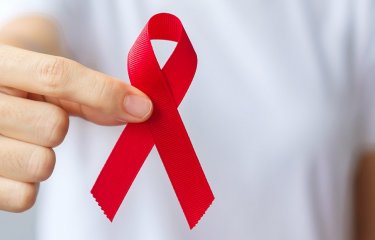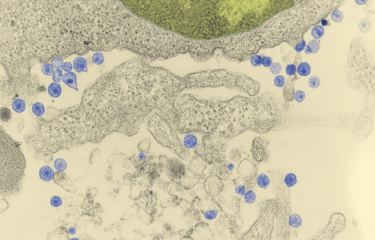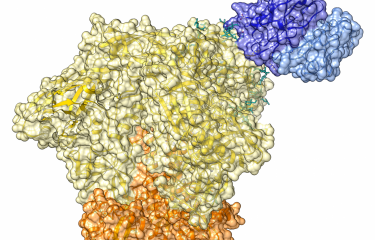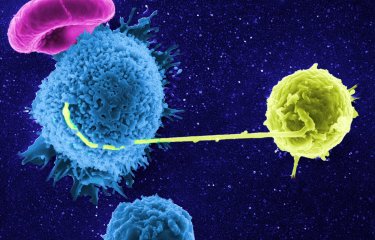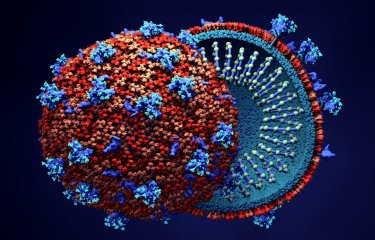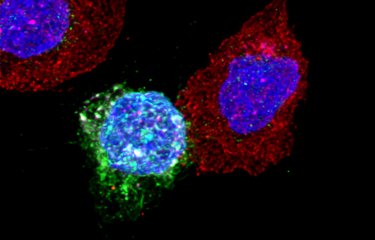The initial findings of the ANRS CLEAC[1] study[2] coordinated by Pierre Frange (Hôpital Necker – AP-HP), help define the immunological and virological benefits of early antiretroviral therapy in HIV-infected children living in France. The results of this study will be presented by Florence Buseyne (Oncogenic Virus Epidemiology & Pathophysiology Team - Institut Pasteur) this Wednesday, 25 July at the 22nd International AIDS Conference (AIDS 2018) being held in Amsterdam from 23 to 26 July 2018.
Without treatment, an HIV-infected child is at greater risk of disease progression to AIDS than an adult. Initiation of early treatment in infants shows an undeniable clinical benefit by reducing the risk of death in early childhood. It may also be accompanied by a significant reduction of the viral reservoir (the amount of total viral DNA present in the immune cells of patients), which could promote the accumulation of conditions required for remission. It is therefore essential to better understand the interactions between the virus and the immune systems of children, and more accurately evaluate the short and long-term virological and immunological benefits of initiation of early therapy in children. These are the objectives of the ANRS CLEAC study.
This physiopathological study included 46 children (from five to 12 years old) and 30 adolescents (from 13 to 18 years old) living with HIV since birth. Among them, 36 started antiretroviral therapy before the age of six months and 40 after the age of two years. All achieved virologic success. Researchers examined participants’ blood samples, defined their immunological and virological status and analysed the results according to their age at the time of the study and the age at which they started treatment.
First of all, the ANRS CLEAC team assessed the viral reservoir and observed that the viral ADN level was significantly lower in children and adolescents who started their treatment before the age of six months compared with those who started treatment after the age of two years. This lower viral reservoir also persists in early-treated adolescents, even though some of them take their medication less regularly.
In parallel, the immunological analysis looked at naïve T lymphocytes which have the ability to respond to new pathogens and vaccines. The ANRS CLEAC team found that these immune cells were present in greater numbers in children who started antiretroviral therapy before the age of six months. This difference was not observed in the adolescents. This higher level of naïve T lymphocytes is one of the markers of a healthy immune system.
Thus, the initial findings of the ANRS CLEAC study show that, for the 1st time, initiation of antiretroviral therapy before the age of six months in HIV-infected infants has undeniable virological and immunological benefits, which are observed until late childhood, or even into adulthood.
[1] Comparison of Late Versus Early Antiretroviral Therapy in HIV-infected Children
[2] This study was conducted in collaboration with Véronique Avettand-Fenoel (Hopital Necker) and the French perinatal survey (ANRS CO10 cohort) led by Josiane Warszawski (centre de recherche en épidémiologie et santé des populations)
Source
Impact of late versus early antiretroviral therapy on PBMC-associated HIV-1-DNA levels and the percentage of naive T lymphocytes in HIV-1 infected children and adolescents – The ANRS-EP59-CLEAC study
P. Frange 1,2 , V. Avettand-Fenoel1,2 , J. Le Chenadec3 , C. Dollfus1 , L. Nailler3 , O. Dialla3 , T. Montange4 , D. Batalie4 , M. Fillion2 , I. Leymarie3 , L. Ait Si Selmi3 , T. Wack3 , J. Warszawski3 , F. Buseyne4 , ANRS-EP59-CLEAC Study Group
1 AP-HP, Paris, France,
2Université Paris Descartes, EA7327, Paris, France,
3INSERM, Le Kremlin- Bicêtre, France
4Institut Pasteur, Unité d'Epidémiologie et Physiopathologie des Virus Oncogènes, Paris, France




